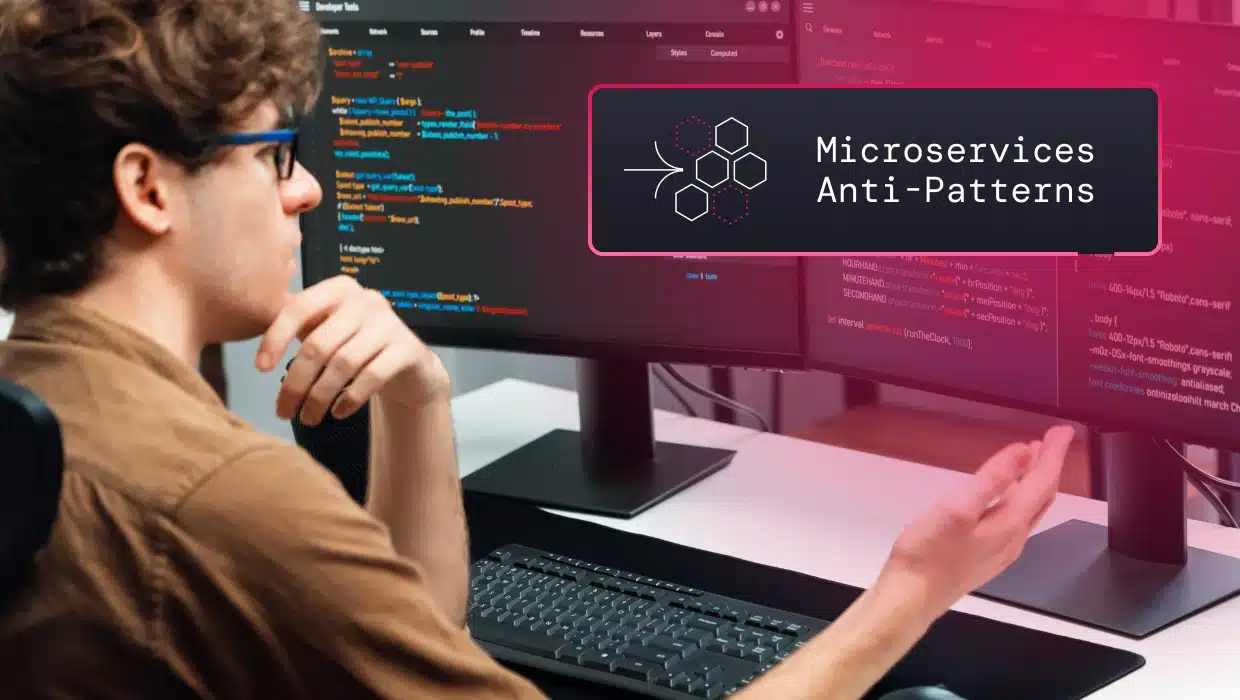The choice to move on from outdated legacy software is by no means a small feat. And yet, in many cases it’s essential. According to a 2022 survey, 79% of IT leaders find themselves held back in their digital transformation processes by outdated technology. Whether you want to move to modularized versions of monoliths or microservices, the best time to start is now. If you decide that cloud-based microservices is best for your organization, here’s how you can transform your monoliths into microservices.
Building a better software architecture comes with a wide range of benefits, from more efficient software builds and functionality to easing the strain on your technical personnel. But it cannot happen automatically.
Instead, you need a strategic and comprehensive process that addresses how to transform monoliths to microservices. That process, in turn, relies in large part on the right tools to help you succeed.
So let’s get started. In this guide, we’ll cover both the basics of a monolith to microservices transformation and the tools that can help with that process — including some tips on how to select a tool that is specifically designed to help your transformation succeed.
Just the Basics: How to Transform Monoliths to Microservices
Designed as a solitary, internally focused system, monolith architecture includes everything the user needs—from a database to interfaces. But it also lacks flexibility, which can make microservices a more attractive option for smaller teams moving to more agile alternatives. But of course, unless you’re starting from scratch, you cannot simply turn the page to this more dynamic environment. Instead, you need to know how to transform monoliths to microservices.
Related: Is Refactoring to Microservices the Key to Scalability?
While the nuances of that process go beyond the scope of this guide, it bears mentioning just what steps are involved in it—and where the right tools to deliver that transformation enter the equation.
- Assess your current software architecture. While it can be difficult to dig to the bottom of years-old monoliths, architectural observability can play a key role in this step.
- Determine your migration approach. There are several routes you can take here. Familiarize yourself with the Seven R’s of Cloud Migration—your approach will also determine what tools you need.
- Establish continuous modernization. A successful migration from monolith to microservices is not a one-time effort. Instead, it’s only the start of an ongoing effort to keep optimizing your architecture over time.
Each of these steps takes significant time, expertise, and strategy. Each of them, though, can be improved and streamlined with the right tools.
Four Types of Tools You’ll Need to Ease the Monolith to Microservices Transformation
Across industries, a number of tools have established processes that can help with the transition from a monolith architecture to microservices. Each of them covers different areas of the process, ultimately working together to help you build a successful transformation process.
1. Architectural Observability Tools
Architectural observability is a crucial first step in any microservices transformation. As mentioned above, it allows you to get a full picture of the current monolith to be transformed, which establishes the baseline and steps you need to take. Especially for complex platforms, that process can be immensely cumbersome—until you find the right tool for it.
Observability tools are centralized platforms that visualize the data streaming from your application. Based on that data, you can better understand the nature of the software, including anything from its behavior to the infrastructure that led to the data delivery to begin with.
Unlike APM and observability tools that focus on understanding metrics, logs, and traces, architectural observability focuses on the foundational pieces of your software. With the right tools, you will be able to incrementally identify and address architectural drift while also managing the accumulation of architectural components, decisions, and drift that can make monoliths so difficult to manage.
The right tools for architectural observability can help establish the foundation for how to transform monoliths to microservices. Only full observability allows you to understand just where—and how—you can begin your transformation process.
2. Software Replatforming Tools
Replatforming is the process of taking legacy software and shifting it to a cloud environment. But it’s not just a one-to-one replacement; instead, some modifications are made to optimize the platform. While not a true transformation from monolith to microservices, some of these modifications can still move your architecture in the right direction.
You’ll find a plethora of tools that help with this process. For example, Azure Migrate is a Microsoft service designed to move your software to the Azure platform, with optimization steps included in the process. AWS Application Migration accomplishes a similar goal, as do Google Cloud Migration Tools.
Related: The Best Java Monolith Migration Tools
Each of these tools, of course, is optimized to migrate your architecture to the cloud system to which they’re attached. In their goal of streamlining that migration, they offer some optimization, but the process still falls short of a complete monolith to microservices transformation—which is where refactoring tools enter the equation.
3. Software Refactoring Tools
Among the Seven R’s of Cloud Migration, refactoring offers the best mix of streamlining the migration and creating a true transformation from monolith to microservices. It focuses on changing the fundamental code of your application—without changing its core functionality. This process can quickly become resource-intensive, but refactoring tools can make it a more realistic and efficient option.
The right refactoring tools will take on multiple dimensions. The process begins with dynamic observations that track exactly how the current architecture operates, which then identifies the ways in which a monolith can split into multiple microservices. It all happens dynamically, maximizing the accuracy of the analysis to avoid potential pitfalls or blind spots static analytics might miss.
And that’s just the beginning. The right tool takes that analysis and begins to split up services while minimizing dependencies. Much of that migration to a more modern framework can happen automatically and with minimal manual inputs required. Engineering teams can instead focus on testing the newly created microservices to ensure the new and modified source code functions as well as and better than the monolith it replaces.
4. Continuous Modernization Tools
Finally, it’s crucial to acknowledge the fact that microservices, unlike monoliths, are not static. Instead, they are at their best when continually optimized and modernized to keep improving efficiency and productivity for the business.
That, in turn, means finding a tool that can help take an iterative approach to app modernization. It needs to account for release cycles and sprints, along with insights taken from ongoing architectural observability, that underlie the analysis of where modernization continues to be beneficial.
Look for tools that offer self-service modernization options. The right tool can help you continually track your inefficiencies and architectural tech debt, which in turn creates a roadmap for where you can continue to improve. Connect it with your refactoring tool, and you get a modernization engine designed to keep optimization and efficiency at the forefront of all your software engineering and operations.
How to Select the Right Tool to Transform a Monolith to Microservices
For each of the categories mentioned above, you will find multiple tools that claim to help you in the process. Selecting the right one, as a result, can be surprisingly challenging. A few tips can help:
- Look for tools that prioritize refactoring over simpler alternatives like replatforming. It’s the only way to ensure that your outcome is a truly agile and future-focused software architecture.
- Look for tools that can combine at least some of the functions above. A refactoring tool will be helpful on its own, but that helpfulness gets magnified when it also integrates with your architectural observability and continuous modernization engine.
- Look for tools with an established track record. Case studies and references can help you understand whether the claims made on the website or in an exploratory call can be backed up with real-world successes.
- Look for tools that free up your resources. The more you can automate some of the processes outlined above, the more your team can focus on the more strategic and quality assurance aspects of the microservices transformation.
Ultimately, the right tool can help you understand how to transform monoliths to microservices. Even better, a tool that matches all of the above criteria can significantly streamline the process, saving you time and resources while improving the outcome.
vFunction’s suite of tools, from our Architectural Observability Platform to the Code Copy feature and continuous optimization abilities, can help you get there. Request your demo today to learn how our platform can move your software out of legacy systems and into a modern, future-facing software architecture.







